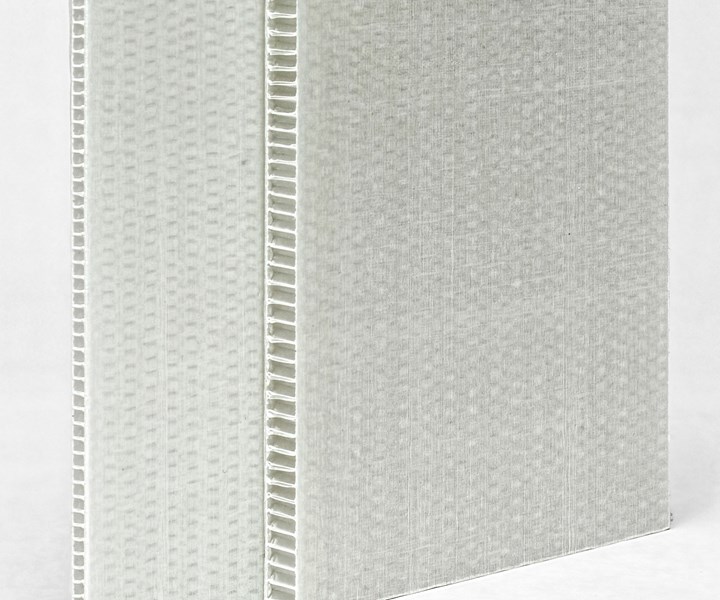Thermoplastic Honeycomb Sandwich for Overmolding Into Thinner Lightweight Composites
Econcore’s new ThermHex organosandwich of thermoplastic honeycomb surfaced with long-fiber organosheet offers new composite overmolding alternatives.
Injection overmolding of continuous-fiber/thermoplastic prepregs, or “organosheets,” is gaining traction in lightweight structural composites for automotive, electronic and other applications. At last fall’s K 2019 show in Germany, of Belgium exhibited a new range of overmolding materials that offer potential for faster molding cycles and other benefits. ThermHex organosandwich materials, produced by Econcore’s subsidiary in Germany, are made from extruded PP film, which is folded into a continuous honeycomb and then covered on both sides with a skin of unidirectional, crossply glassfiber impregnated with PP. The PP organosandwich can be preheated, preformed (including local compression to different thicknesses), and then overmolded with PP in an injection press. Honeycombs are now also being made of recycled PET. The company sees PET-based organosandwiches as suited to electrical enclosures, furniture, pallets, and large logistics boxes and trays. Special versions of this product have been made with nylon 6 for high-heat automotive applications and with polyetherimide (PEI) for aerospace parts.

Econcore’s new ThermHex organosandwich expands opportunities for injection overmolded thermoplastic composites.
Econcore says the organosandwich approach allows for production of thinner overall part profiles, because ribs are no longer needed for stiffness. Though the overall sandwich thickness is 6 to 12 mm, the PP/glass prepreg skin on the honeycomb is only 0.5 mm, vs. 1.0 to 2.5 mm for typical organosheets used for overmolding, allowing for faster preheating and cooling. Less material is needed for overmolding, as well, allowing for faster cycles and reduced material consumption.
Related Content
-
Got Streaks or Black Specs? Here’s How to Find and Fix Them
Determining the source of streaking or contamination in your molded parts is a critical step in perfecting your purging procedures ultimately saving you time and money.
-
Using Data to Pinpoint Cosmetic Defect Causes in Injection Molded Parts
Taking a step back and identifying the root cause of a cosmetic flaw can help molders focus on what corrective actions need to be taken.
-
A Systematic Approach to Process Development
The path to a no-baby-sitting injection molding process is paved with data and can be found by following certain steps.





